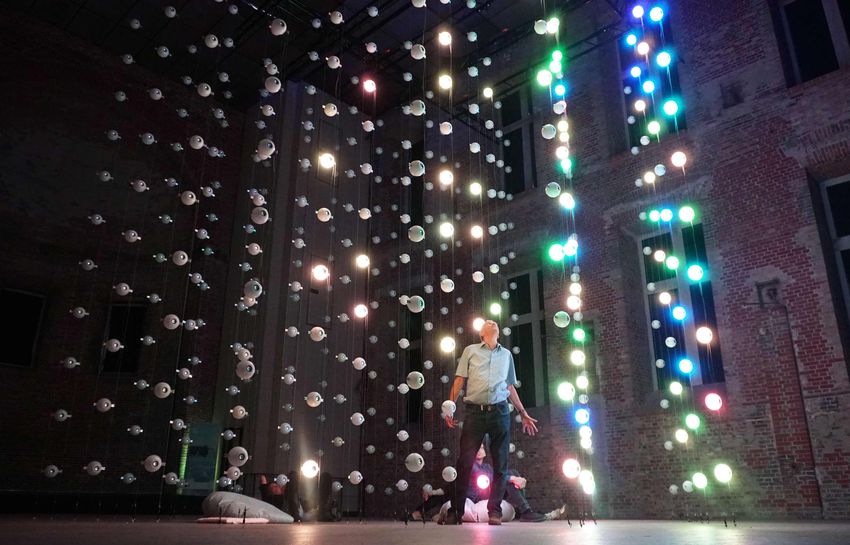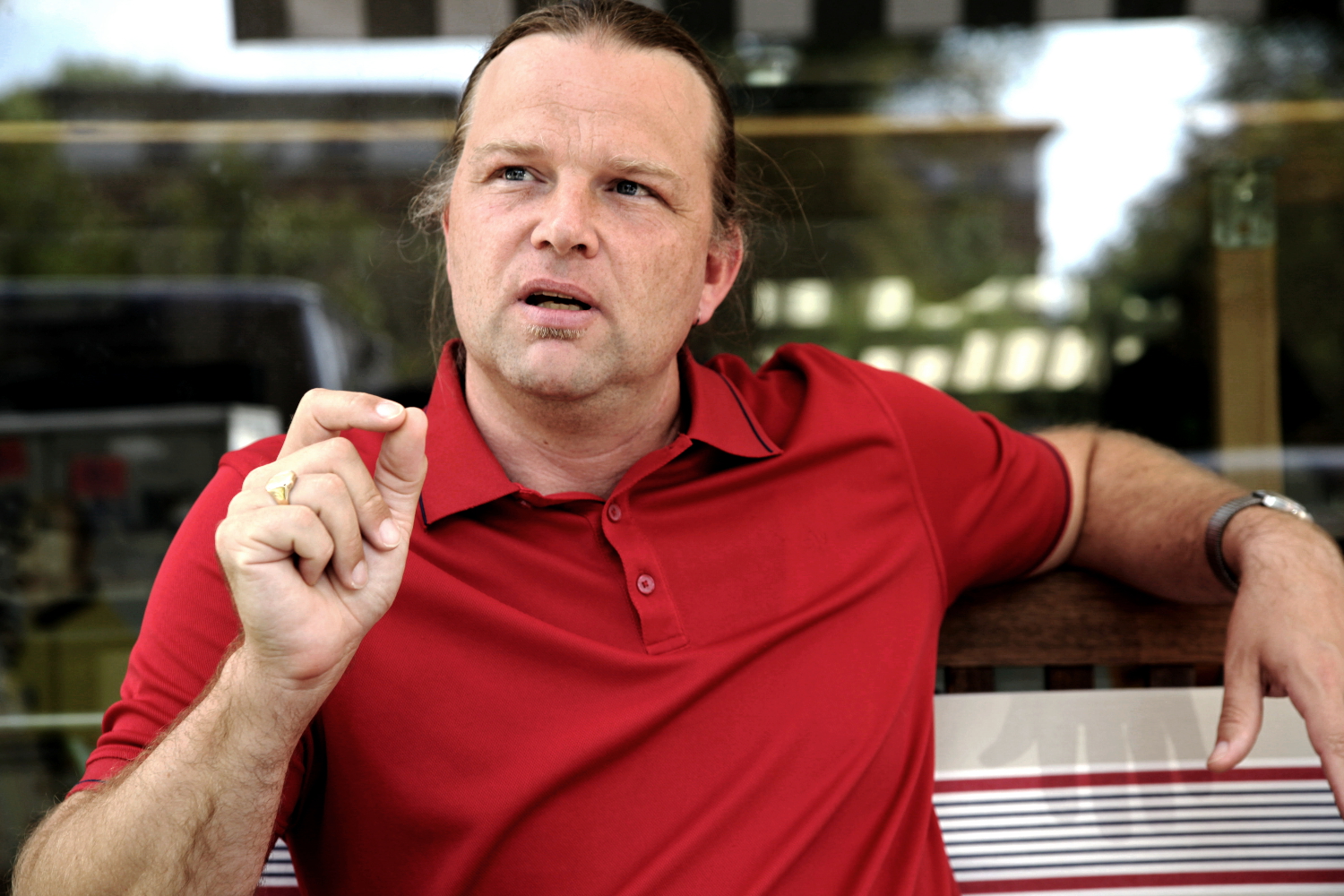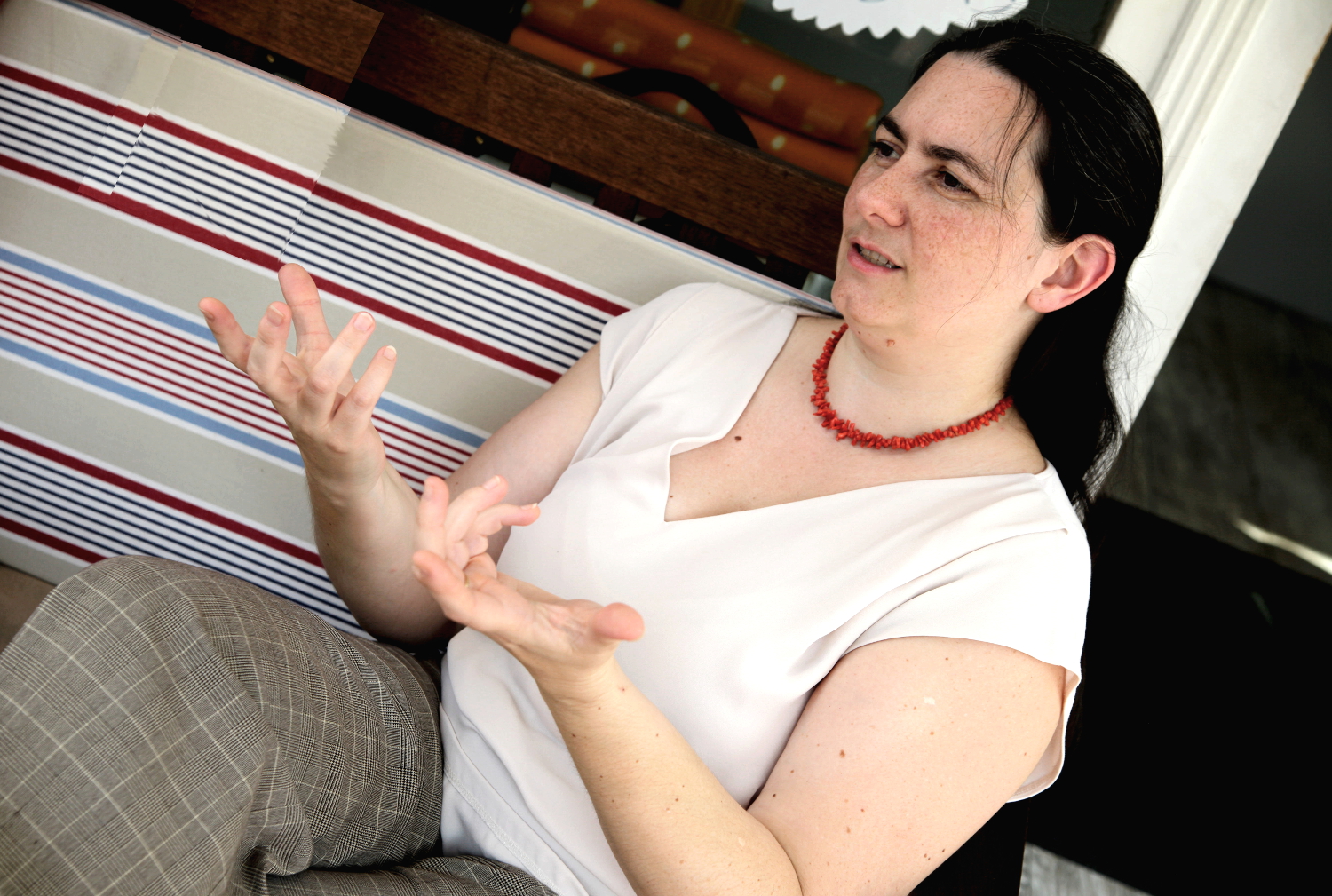Legislation & Foundation, Financing, Consultation
Nachgefragt with Jack Wolf: On the tracks of the new silk road - from Hamburg to China and back
Route unknown. The only thing the artist Jack Wolf knew: …

Imagine: You're standing in a large room, and in the middle, hanging six meters above the ground, are 37 strands, each with 12 spherical, glowing speakers that emit sounds. Added to this are the signals from light sensors frozen up to 2,500 meters deep in Antarctic ice, which are transmitted into the room. It sounds crazy, but you can currently listen to and watch it in the St. Elisabeth Church in Berlin-Mitte. The two people who are realizing the project are Dr. Miriam Seidler and Dr. Tim Otto Roth from the AIS³ project. Both were in consultation with us two years ago. In part 3 of our series "Nachgefragt" we want to know from them: What paths did they take after the consultation? How do they finance their current project and what is on view at St. Elisabeth's Church?
By CAROLIN MACKERT
Even at the entrance to St. Elisabeth's Church, it is clear that what happens here does not happen every day. Colorful balls of light illuminate the otherwise pitch-black room, sometimes there is a rustling or humming sound, sometimes there are strange beeps that merge into one, then there is a short silence again. A girl has her head bent back, her eyes wide open. She stands in the middle of the room and turns around again and again to the lights and sounds that affect her senses from various directions. We have an appointment with the curators and organizers, with Dr. Miriam Seidler and Dr. Tim Otto Roth. They are waiting outside. Still dazed by the impressions, we stroll into a nearby café. Slowly, the bright sunlight brings us back to the present. The tape is ready, we can start.
Kreativ Kultur Berlin:Hello Miriam and Tim, before we go into depth, please introduce yourselves briefly.
Miriam:I'm Miriam Seidler, PhD in literary studies and managing director of Tim Otto Roth's studio. Before I took on this task, I was a research assistant at the University of Düsseldorf. That's also where I first came into contact with the topic of proposal writing.
Tim:I'm Tim Otto, I'm from the Black Forest and I'm often in Berlin. I studied at the Kunsthochschule in Kassel and later did my doctorate in art and science history at the Kunsthochschule für Medien in Cologne. In addition to conceptual art, composition is increasingly taking up a lot of space in my work. Already in the third semester of my studies I realized my first big project. Even then I realized that it would be a special challenge to find the necessary money for it.
Kreativ Kultur Berlin:Tim, with your installation AIS³ you combine the fields of physics and art. How can I imagine that? What is there to see and hear?
Tim:Imagine the following situation: You walk into a large room and in the center, six meters above the ground, hang 37 strands, each with 12 spherical, glowing speakers that emit sounds. I play this sound room with data from the IceCube observatory, which consists of light sensors frozen up to 2,500 meters deep in Antarctic ice. Down there, detectors measure flashes and movements of light, even though it is pitch black to our human eyes at depth. These light movements, which are imperceptible to us, are made tangible for visitors to the exhibition acoustically and visually via the loudspeakers.
We are concerned with making nature physically tangible, which is otherwise not visible and tangible
Kreativ Kultur Berlin:What is the goal? What is this project about for you?
Tim:For me, it's about making it possible to physically experience nature, which is not visible in itself and cannot be experienced in any other way. The measurements of the astrophysicists at the South Pole show us very impressively that we are exposed to nature and cannot influence it. For example, about 70 billion neutrinos pass through a single fingernail every second. The neutrinos hardly interact with other elementary particles, which is why they are very difficult to measure. Physicists therefore also like to speak of ghost particles. The data trying to track down this ghostly natural phenomenon I process musically. The fascination that emanates for me from this natural experience, I try to present in my sound space.

Kreativ Kultur Berlin:You sought advice from Kulturförderpunkt in April 2016, when the project was just an idea. Why did you come to the consultation? What questions did you have?
Miriam:AIS³ is a project on a scale that cannot be realized with a single funder. So we had to make targeted applications to different potential funders. We asked ourselves: How do you approach the Berlin public and foundations in Berlin? How do you go about making such an application successful? In addition, with AIS³ we are not implementing a classic art project, but rather combining a unique, luminous sound installation with current basic research in astroparticle physics. The two different disciplines each have their own application languages. Potential sponsors should not get the impression that we are doing pure science communication or that we are alienating the data in the artistic implementation to such an extent that the connection to the research project can no longer be established. For the application, therefore, a language game is necessary that can pull out different stops to address different target groups. Here it was important for us to get feedback from experts: Does our language game between art and science also work for cultural foundations?
We came to the Kulturförderpunkt to get tips from experts: How do you approach the Berlin public and foundations in Berlin? How does one go about ensuring that an application is successful?
Kreativ Kultur Berlin:How difficult was it for you to get funding and find partners afterwards?
Tim:It was not always easy with the funding applications. The breakthrough for our project came with a promise of partial funding from the Ernst Schering Foundation. Nevertheless, there were also setbacks, such as the rejection by the German Federal Cultural Foundation. Surprising, really, because we thought that the project, with its interdisciplinary and international orientation, would fit in well with the Foundation. The application process is often underestimated work, but it was worth it for us - in the end we were funded. We received half of our budget from the Capital Cultural Fund (Hauptstadtkulturfonds). The Capital Cultural Fund in particular provides federal funding for projects in Berlin that are significant for the city, but also have national and international appeal and are innovative. Our project fits in very well here.
Miriam:But our work itself is also a challenge. Our loudspeakers are absolutely new developments, you can't just buy them off the shelf. The design and technology of the speakers were created in our studio. A great team of physics students from RWTH Aachen University helped us with the assembly. Since our studio is not in Berlin, the contacts of our cooperation partners from Kultur Büro Elisabeth and Desy in Zeuthen were also important for the press work and advertising.

Kreativ Kultur Berlin:Now the time has finally come: From August 29 to September 16, interested parties can view "Sound Laboratory" AIS³ in the St. Elisabeth Church in Berlin free of charge. What will be offered to the visitors? And who do you want to reach?
Miriam:We want to address as broad an audience as possible: physics enthusiasts and musicians, but also interested pupils and students and those who say, "oh, physics, I have no idea about that". After all, there is something for everyone: The immersive sound space will be complemented by an exhibition on the IceCube research project curated by DESY Zeuthen, by scientific lectures, guided tours for students and a symposium "Physics and (Arte)fact" on September 14 and 15.
Tim:One aspect we have not addressed so far is composition. The connection between art and science condenses in the question of how a music of the spheres can sound in the 21st century under the auspices of a physics. The result is no longer what we conventionally understand as harmonic, but new microtonal tone relations emerge.
We are interested in both physics enthusiasts and musicians, but also in interested pupils, students and those who say, "oh, physics, I don't know anything about that"
Kreativ Kultur Berlin:Are there comparable projects or exhibitions in Berlin that bring art and science together in this way?
Tim:There are a few projects in this area. For example, the State Festival, a great initiative launched by Christian Rauch. But a sound space like ours, in which the visitor is not exposed to sound from the outside, but is surrounded by sound, is something I have never seen before. The scale of the implementation is unique, and so is the form in which a new kind of spatialization of sound is realized via the physical placement of the sound source in the space itself.
Kreativ Kultur Berlin:What do you recommend to artists and creative professionals who are still in the idea phase for a similar project?
Miriam:First and foremost, you need staying power! We have made repeated attempts over a period of five years. You simply can't underestimate that, in addition to the time-consuming application process, project administration - i.e. accounting and communication - also takes a lot of time. Most foundations still have their sights set on museums with good administrative facilities and don't target studios like ours, where this infrastructure doesn't exist from the outset.
Kreativ Kultur Berlin:What's next for you and your sound lab? Are there any further exhibitions planned?
Miriam:When we dismantle in Berlin again, it goes on for us. The next stop will be in Munich in the spring, and from September 5, 2019, AIS³ will be on display at the Ludwig Forum in Aachen. We are also in talks with IceCube research groups in Amsterdam and Marseille.
Tim:AIS³ is not the only project we are currently working on. We are already preparing for a new large solo exhibition "Logische Phantasien" for the Kunsthalle Aschaffenburg next year. At the end of September, an exhibition on Baroque graphics curated by me will open at the Wallraf-Richartz-Museum in Cologne. AIS³ is my third major sound project. And Berlin is just the right place to throw the stone in the water so that we can make even more waves with this kind of sound art in the future.
Hier gibt es noch mehr Infos zum Projekt AIS³.
Außerdem findest du hier alle Infos zum Hauptstadtkulturfonds und zu Förderungen für Musik und andere Sparten.
Category: Articles from our network
Also a good read
Subscribe to our monthly newsletter!